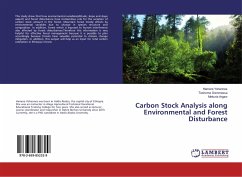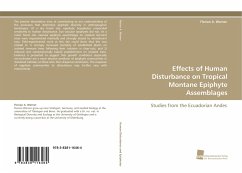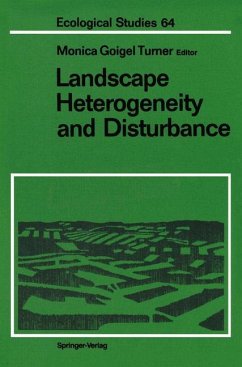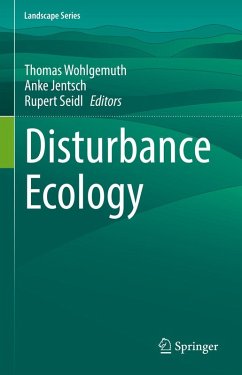
Forest Dynamics and Disturbance Regimes
Studies from Temperate Evergreen-Deciduous Forests
Herausgeber: Birks, H. J. B.; Wiens, J. A.
Versandkostenfrei!
Versandfertig in 1-2 Wochen
153,99 €
inkl. MwSt.
Weitere Ausgaben:

PAYBACK Punkte
77 °P sammeln!
Temperate-zone forests have been shaped by fire, wind and grazing over thousands of years. This book provides a major contribution to the study of their dynamics by considering three important themes: - The combined influence of wind, fire and herbivory on the successional trajectories and structural characteristics of forests - The interaction of deciduous and evergreen tree species to form mosaics which, in turn, influence the environment and disturbance regime - The significance of temporal and spatial scale with regard to the over all impact of disturbances These themes are explored via ca...
Temperate-zone forests have been shaped by fire, wind and grazing over thousands of years. This book provides a major contribution to the study of their dynamics by considering three important themes: - The combined influence of wind, fire and herbivory on the successional trajectories and structural characteristics of forests - The interaction of deciduous and evergreen tree species to form mosaics which, in turn, influence the environment and disturbance regime - The significance of temporal and spatial scale with regard to the over all impact of disturbances These themes are explored via case studies from the forests in the Lake States of the USA (Minnesota, Wisconsin and Michigan) where the presence of large primary forest remnants provides a unique opportunity to study the long-term dynamics of near-boreal, pine and hardwood-hemlock forests. The comparability of these forests to forests in other temperate zones allows generalizations to be made that may apply more widely.
Table of contents:
Preface; Acknowledgements; 1. The forest setting; 2. The disturbance regime and its components; 3. Sampling and interpretation of stand disturbance history; 4. Disturbance, stand development and successional trajectories; 5. The study of disturbance and landscape structure; 6. The disturbance regime and landscape structure; 7. Disturbance in fragmented landscapes; 8. Forest stability over space and time; References; Appendix.
Temperate-zone forests are being shaped continuously by wind, fire and grazing. This book considers these disturbances and consequent issues such as recovery from disturbance, the changing composition of tree species within the forest and the formation of mosaics of different forest types across the landscape.
Considers the influence of wind, fire and grazing on forest dynamics.
Table of contents:
Preface; Acknowledgements; 1. The forest setting; 2. The disturbance regime and its components; 3. Sampling and interpretation of stand disturbance history; 4. Disturbance, stand development and successional trajectories; 5. The study of disturbance and landscape structure; 6. The disturbance regime and landscape structure; 7. Disturbance in fragmented landscapes; 8. Forest stability over space and time; References; Appendix.
Temperate-zone forests are being shaped continuously by wind, fire and grazing. This book considers these disturbances and consequent issues such as recovery from disturbance, the changing composition of tree species within the forest and the formation of mosaics of different forest types across the landscape.
Considers the influence of wind, fire and grazing on forest dynamics.














